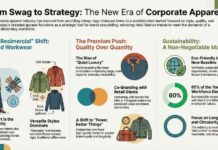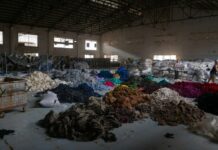A recent report by Kearney has revealed that while circularity scores within the apparel industry are showing an upward trend, the year-on-year progress toward achieving these scores is decelerating. The Kearney CFX 2025 report highlights the various complexities faced by companies striving for sustainability and the significant challenges that hinder substantial advancements toward circular practices.
According to the findings, brands within the industry are increasingly embracing circularity practices, indicating a growing awareness of sustainability’s importance. However, many organizations are encountering difficulties in effectively implementing these practices across their operations. Despite the recognition of the need for sustainability, the transition to a fully circular business model has not progressed as swiftly as anticipated by industry leaders. While some companies have made commendable strides, the overall pace of change is insufficient to meet the ambitious sustainability goals set for the sector.
Kearney’s analysis underscores the necessity for a deeper commitment to circularity among apparel brands. Attaining meaningful progress will require more than just innovative practices; it will involve fostering greater collaboration throughout the supply chain. Key stakeholders must unite to create systems that support circularity and promote resource efficiency, which are essential for long-term sustainability.
The report also points out that consumer demand for sustainable products is on the rise, compelling brands to innovate and adopt eco-friendly practices. However, it stresses the importance of transparency and accountability in these sustainability efforts. As consumers become increasingly informed about environmental issues, they are scrutinizing brands’ sustainability claims more rigorously.
In conclusion, while the rise in circularity scores is a positive indicator for the apparel industry, the Kearney CFX 2025 report serves as a crucial reminder that significant hurdles remain. For the industry to achieve its sustainability objectives, concerted efforts from all stakeholders—brands, manufacturers, and consumers—are essential in driving the transformative changes necessary for a more circular and sustainable future. The commitment to circularity must be a shared responsibility, paving the way for a resilient and environmentally-friendly apparel industry.



































